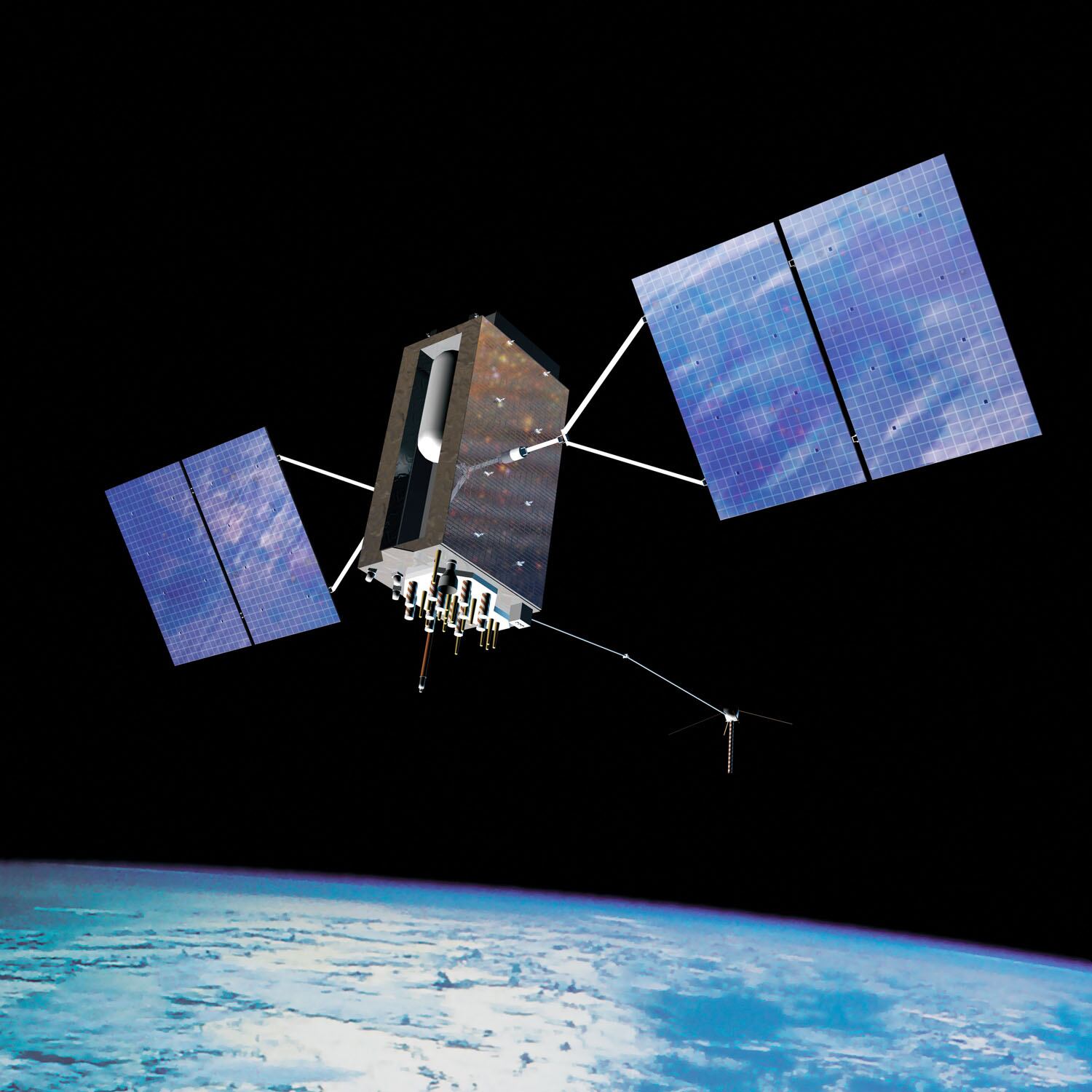WASHINGTON ― Defense Secretary Lloyd Austin will hold a classified meeting at the Pentagon next week to grapple with Russia and China’s possible pursuit of novel space weapons, according to a publicly posted agenda.
The discussion comes after two key events last year: Russia launched a missile to destroy a defunct Soviet-era satellite, creating more than 1,500 pieces of space debris, and defense officials say China tested a new combination of a hypersonic glide vehicle and a fractional orbital bombardment system ― an unpredictable capability that can stay on orbit as long as the user determines and then de-orbit as part of its flight path.
According to the chief of U.S. Strategic Command, Adm. Charles Richard, China successfully tested that capability, which was “never before seen in the world.” Richard, speaking at the Space and Missile Defense Symposium earlier this month, said the military must now overhaul its missile defenses and develop systems to better warn against launches aimed at the U.S.
“I am not convinced at all we’ve fully thought through the implications of what that weapon system means,” he said. “You’re gonna get decreased warning timelines, difficulties in attribution and an increased threat to our traditional space and missile defenses and forces.”
Austin, Deputy Defense Secretary Kathleen Hicks and Under Secretary of Defense for Policy Colin Kahl will meet Sept. 6 and 7 with the Defense Policy Board, an influential advisory group comprised of former national security officials. Assistant Secretary of Defense for Space Policy John Plumb will brief the board on the Pentagon’s upcoming space strategic review.
The huddle will focus “on how China and Russia’s potential development of fractional orbital bombardment systems and space-to-ground weapons could impact U.S. deterrence and strategic stability, as well as to consider U.S. response options to the potential development of such capabilities by any adversary,” the agenda says.
RELATED

Also on the agenda are briefings from the intelligence community on Chinese and Russian space policy doctrine and capabilities, from U.S. Space Command and the Missile Defense Agency on U.S. space and missile defense capabilities and from the State Department on strategic stability and arms control. The board will provide advice and recommendations on a classified Pacific theater-based tabletop exercise, according to the agenda.
The U.S. intelligence community’s 2022 Annual Threat Assessment warned in March Beijing “is fielding new destructive and nondestructive ground- and space-based antisatellite (ASAT) weapons” without mentioning the fractional orbital bombardment system, commonly called FOBS. Russia, it said, is developing ground electronic warfare and directed energy weapons to counter western on-orbit assets.
“Russia continues to train its military space elements and field new antisatellite weapons to disrupt and degrade U.S. and allied space capabilities, and it is developing, testing, and fielding an array of nondestructive and destructive counterspace weapons — including jamming and cyberspace capabilities, directed energy weapons, on-orbit capabilities, and ground-based ASAT capabilities — to target U.S. and allied satellites,” the assessment found.
While the attendance of high-level defense officials at next week’s meeting is notable, analysts say the likelihood of Russian and Chinese FOBS and space-to-ground weapons remains murky, in part because ― while several senior defense officials have affirmed the test took place ― the Pentagon hasn’t made public any evidence.
“Clearly the Russians and Chinese are trying to develop systems to get around the missile defense systems the U.S. has been developing,” said Kaitlyn Johnson, deputy director of the Aerospace Security Project at the Center for Strategic and International Studies. “It’s hard to evaluate what that is from the public side of things, what that’s entailed. I imagine that’s what this meeting is about.”
Likewise, the Secure World Foundation’s Brian Weeden, a former Air Force space operations officer, said the meeting is “surprising” because he wasn’t aware of public data that Russia and China are developing space-to-ground weapons.
“This meeting may be more about the possibility of China developing either of these capabilities, and what impact that might have on U.S. national security,” Weeden said. “That I find interesting, because while Russia and China have been worried about the U.S. developing space-to-ground weapons for decades, the U.S. has during the same time resisted any serious discussions or proposals, saying that these are not real threats.”
Joe Gould was the senior Pentagon reporter for Defense News, covering the intersection of national security policy, politics and the defense industry. He had previously served as Congress reporter.
Courtney Albon is C4ISRNET’s space and emerging technology reporter. She has covered the U.S. military since 2012, with a focus on the Air Force and Space Force. She has reported on some of the Defense Department’s most significant acquisition, budget and policy challenges.








